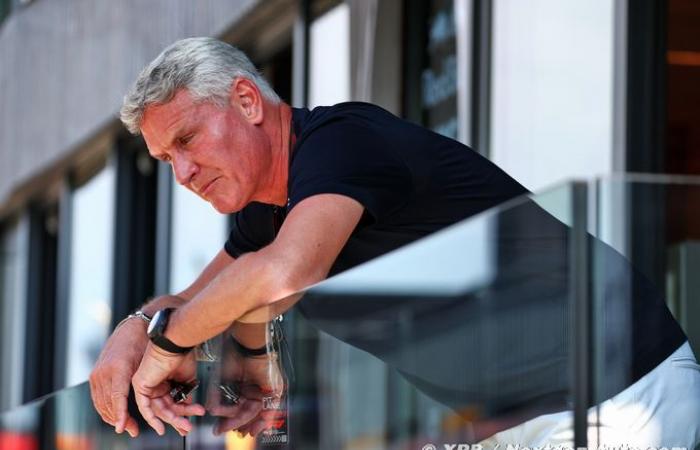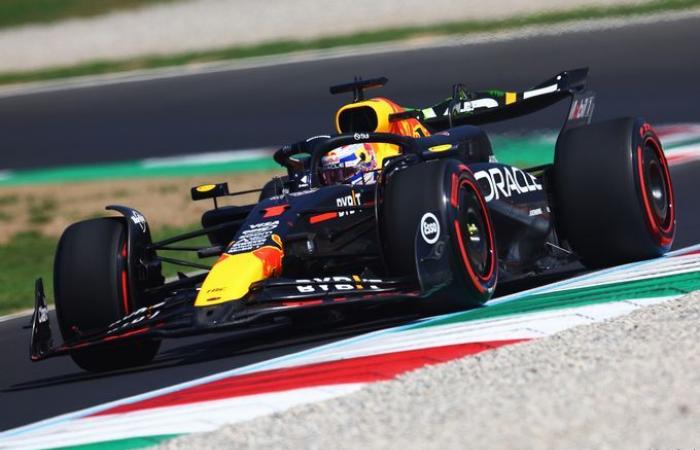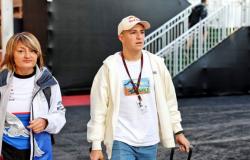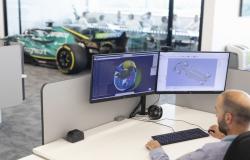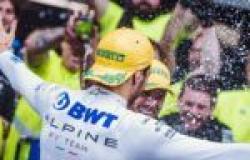Before Max Verstappen, Sebastian Vettel, Mark Webber, Daniel Ricciardo or Sergio Pérez, it was David Coulthard who was at the origin of the Red Bull team project in F1. It was in fact the Scot who began to build the foundations of a team which would soon become multiple world champions.
For one dollar, Red Bull had bought the Jaguar team, however with a promise of investments of 400 million dollars at the time, a colossal sum.
At the time, many mocked the project of an energy drink brand in F1: a can alongside Ferrari or McLaren F1? We know the rest, Red Bull would become world champion from 2010.
At the end of 2004, Coulthard was leaving McLaren F1 and talking to several teams on the grid. But how did Horner and Mateschitz, the CEO of Red Bull, end up convincing him?
“I never considered staying with Red Bull for 20 years or anything like that” the one who is still an ambassador for Red Bull tells Planet F1.
“Above all, I had a vision for the next few years: what can I accomplish, or what can we do together in the years to come? »
“I didn’t know if Dietrich Mateschitz had this long-term vision, because before signing the contract I wanted to know not only if he had the money, because that is only a fraction of the story, but also if they had the intelligence in addition to the budget. »
“And his vision was absolutely to first get the respect of the paddock. And then my goal was for us to become Formula 1 world champions.”
Dietrich Mateschitz, now deceased, had a clear vision and a management style (trusting the field and Christian Horner) which bore fruit.
“He was very clear about what was possible and what the goal was, and I’m sure that’s the same vision he had with this energy drink. He was trying to convince people that this was something that would improve their lives.” continues Coulthard.
“And that same vision and belief are the foundations of what has become Red Bull today. But my main concern at the time was who the people were there. What was I used to? Where were the gaps and how could they be filled? It was a very pragmatic approach to putting the pieces in place. And honestly, I don’t think it’s really changed since those early days. »
David Coulthard was keen to not only be a driver, but also an important player in building the team.
“At that time, I was more involved”he remembers of his first days in Milton Keynes. “I went to the factory more often than I ever did to McLaren”.
“We would go to Salzburg and meet Dietrich after the Grand Prix, explaining what we had achieved, what we needed, how things were progressing. Things like tire choice. Why we wanted Michelin or Bridgestone, or whatever the option was. »
“It was great. It gave power. And then, when I finished this adventure, it was not difficult for me to give way to Sebastian, and then this whole new adventure began. »
Coulthard wanted Red Bull to buy Cosworth
And David Coulthard had proposed to Red Bull a choice that would not be made until many years later: to become its own engine manufacturer!
“The engine, we were customers of Cosworth, then we were customers of Ferrari, then Renault. Being a customer isn’t ideal when you’re used to being a factory team. »
“So it was an area where, in many ways, they went where I would have liked to have seen them go much sooner. Because I was never a big fan of the Toro Rosso acquisition, and I made that clear to Dietrich at the time, because I was like, “It’s hard enough to win with a team, why would we want the distraction of a second shift?” »
“It was all about marketing, and it found its place. But in the early days, it was actually a challenge to have these two resources, when I would have preferred to invest in an engine. Buying Cosworth and making a Red Bull engine was my vision. But it worked out well for the team. »
Coulthard also advised Red Bull to give up some reliability for performance, particularly in terms of the gearbox.
“We needed to find an engine partner who would give us a little more flexibility”he remembers. “And the gearbox was a big area where we were behind, because the other teams had switched to non-stop gear changes, which yielded a few tenths of a second per lap. »
“So we brought in someone from Ferrari, who I had worked with at McLaren, and we got a test bench for the gearbox, which was a big investment that Dietrich had to approve. We were pushing to try to introduce that. »
“Of course, when you push, there are failures, but I saw failure as an important part of accelerating development, because if you always stay in safety, how do you know how much margin you have if you always achieve the objectives? »
“That meant we had a few (retirements), but if you don’t win the Grand Prix, what’s the point? »
“If the goal is to win races, you do everything possible to accelerate that moment. There were some painful moments, but I think it showed that in the long term this goal was a good foundation. »

